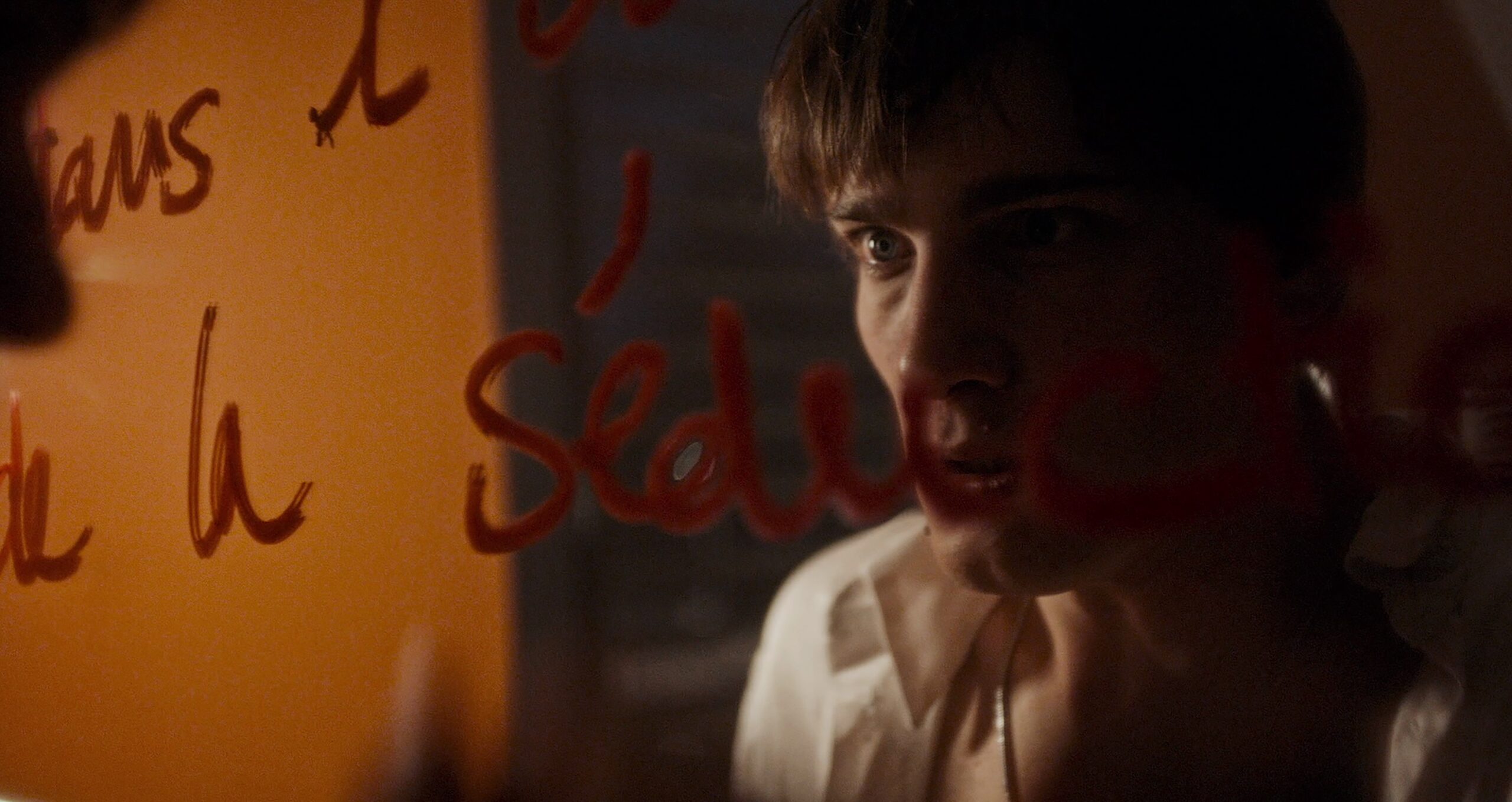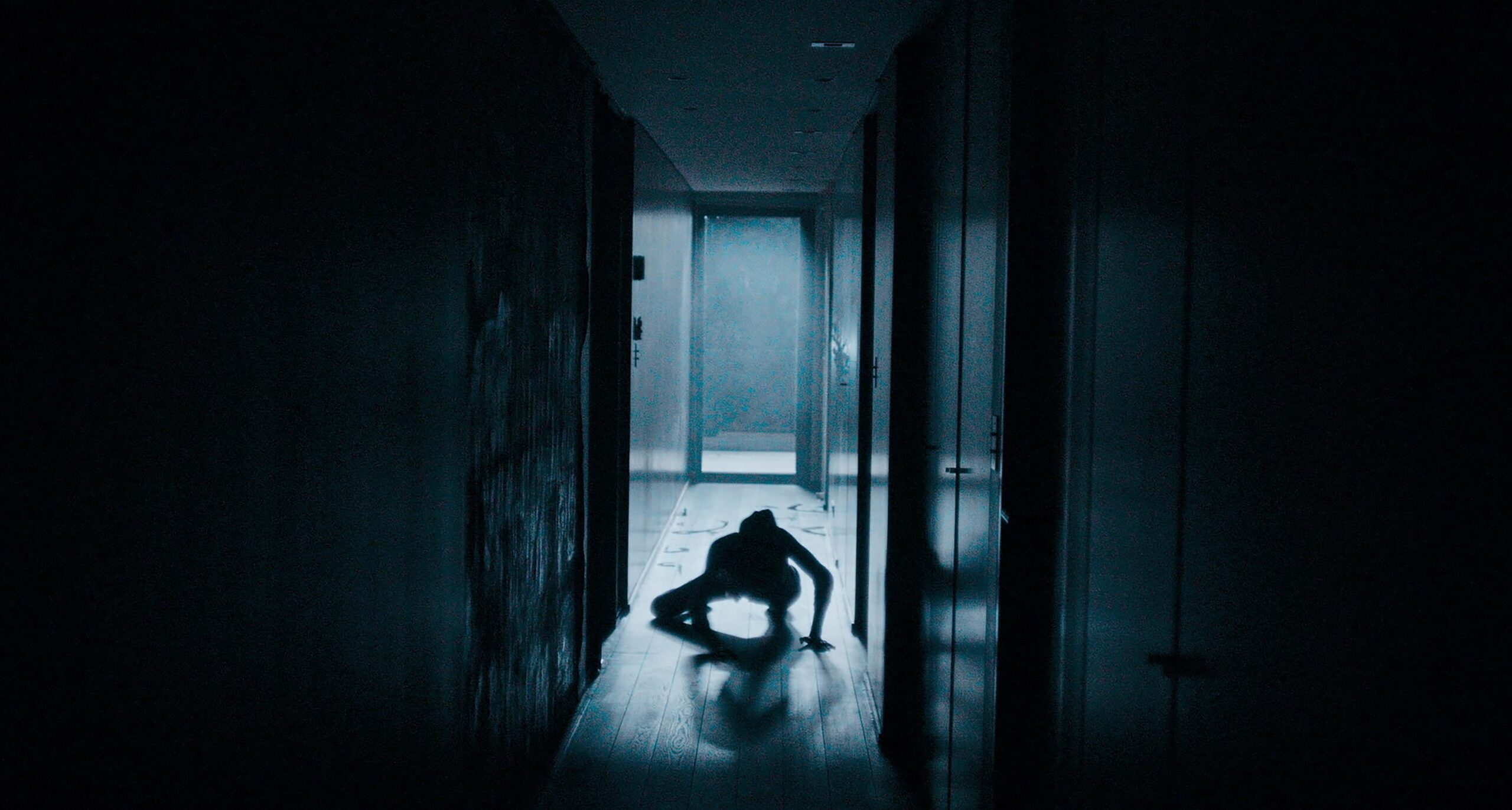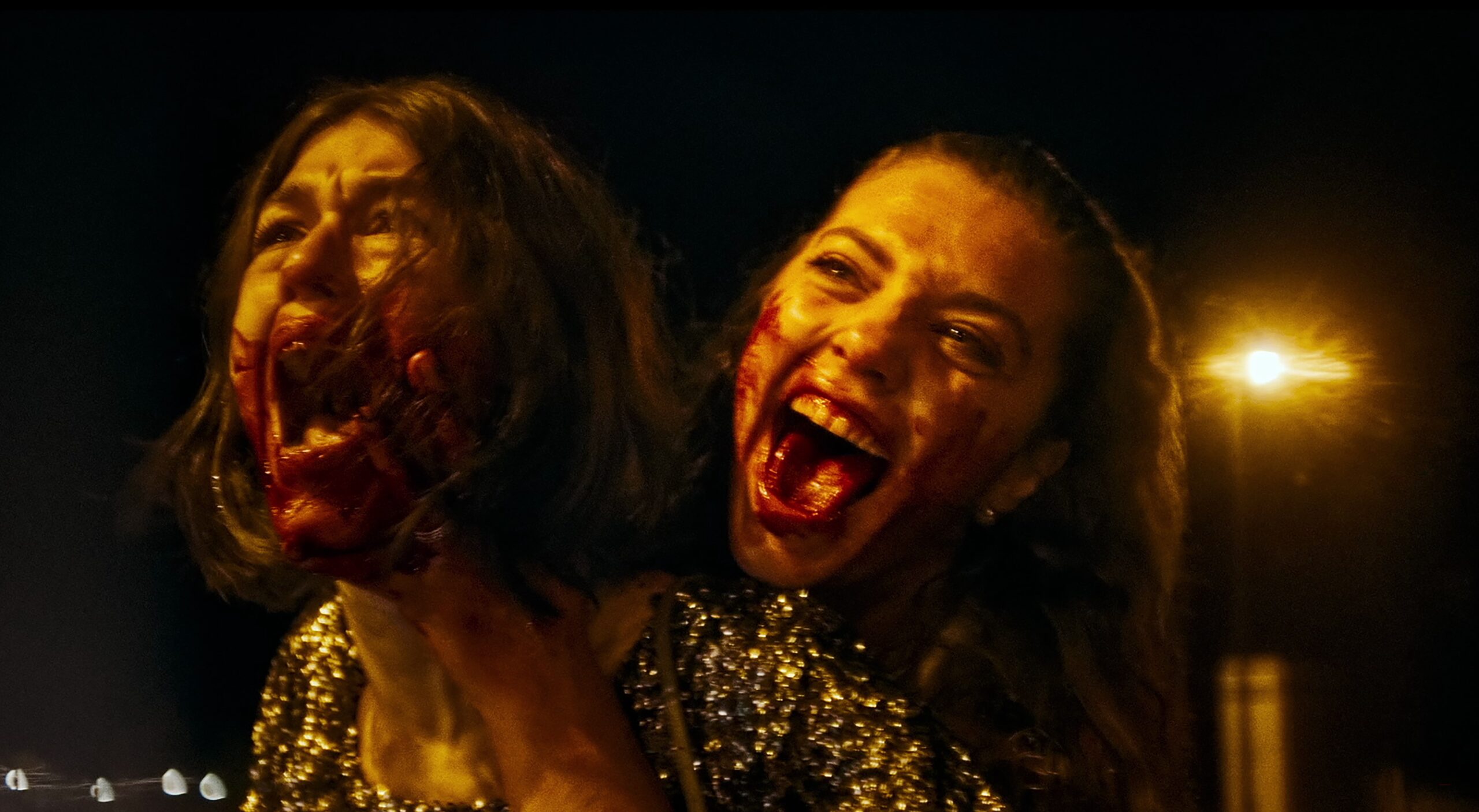Want to hear more from the actors and creators of your favorite shows and films? Subscribe to The Cinema Spot on YouTube for all of our upcoming interviews!
Managing editor & film and television critic with a Bachelor's of Arts in English Literature with a Writing Minor from the University of Guam. Currently in graduate school completing a Master's in English Literature.
Thus far, the horror streaming service, Shudder, has never failed to impress in 2024. Its spring releases of Late Night with the Devil and Humane have been decent titles. More recently, it had a group of films make their Fantastic Fest debut. I’ve started catching up on coverage of the film festival, first with V/H/S/Beyond, and then with Daddy’s Head. My third feature film review here is a great one. MadS is a horror-thriller film that features an unrivaled one-take narrative, utilizing the most out of its collective talent. Even Shudder’s prior release this year, In A Violent Nature, comprises continuous shots but with jump cuts in between. By comparison, this eighty-nine-minute title exhibits its story uninterrupted, act by act, scene by scene, moment by moment, down to a character’s incremental movement. Having seen it twice, I can candidly state that this is not a film to miss.
MadS is written and directed by David Moreau.
In this review, I will discuss David Moreau’s MadS. As this article’s title suggests, no spoilers will be present.
Shudder’s MadS Synopsis
According to Shudder Press, here is the official synopsis for David Moreau’s horror thriller feature film, MadS.
Eighteen year old Romain has just graduated and makes a stop at his dealer’s place to try a new pill. As he heads off to a party, he sees an injured woman on the side of the road and decides to help her, but when she gets in his car, she suddenly smashes her own head against the dashboard, bleeding out until she dies. Is this a bad trip? Or is it something else? One thing is for sure, it’s only the beginning of the night.
Shudder Press
Discussion
The feat of shooting the film without an editor is impressive, and I cannot overstate that enough. When cinephiles think of one-take films, they think of such titles as Sam Mendes’s 1917, which in actuality choreographed moving camera shots to give the impression of two continuous takes. MadS‘s combined effort to execute everything within its runtime pays off incredibly. The fact that I could not take my eyes off the screen to not miss a second of the one-take narrative shows me that this truly is a hellish “bad trip”, or as Moreau states, “an unparalleled plunge into this altered state of consciousness.”
It must have taken seasoned professionals to achieve a feat of this magnitude. Moreau’s filmmaking capabilities are put to the test as the translation from script to screen never ceases until the credits play and MadS fades to black. The film can be best described as a bridge that is burned pretty early on, and I mean early on. The bridge connects sanity to insanity, sobriety to intoxication, security to danger, bliss to bleakness, etc., and as that bridge continues to burn, any connection to what’s come before crumbles and dissipates.
The “bad trip” sentiments and its prolonged effect turn more and more relatable as characters traverse deeper into the spiral of their town’s heightening predicament. Save for maybe two fleeting appearances, nobody is safe from what will occur. Even worse, the downside to Moreau’s story is the unfortunate character choices that build off one another. One or two factors precipitate the events that follow, and I cannot help but wonder if it isn’t the interaction with the woman on the road (Sasha Rudakova) but rather the drug ingestion that serves as the culprit.
A Progressing Production Without Pause
Music composer Nathaniel Mechaly’s scoring is a massive blend of emotions from the upbeat, ominous instrumental as Romain (Milton Riche) has his first breakdown; to the musical headache that follows him up a flight of stairs as if a demonic presence; to the horrific score as he examines himself in a bathroom mirror; to the suspenseful score as he makes a race against time; to the self-destructive instrumental as he travels from home to the street; to the dark and ominous score as Anaïs “Ana” (Laurie Pavy) bikes through another street; and to the psychedelic soulful score as she holds onto a close friend.
Moreover, I love the song selections that add to the unique soundtrack. The drum solo leading to the first track plays as if they are heartbeats, with Lozano’s camera moving at the same speed as Romain in his Mustang. Romain and Ana’s ride to a party is an excellent sequence consisting of nightclub tunes, sound editing to drown out the music, dialogue editing to reverberate character voices, and the choppy sound design of a helicopter flying overhead—all while Romain is zoning out.
Supervising sound editor Germain Boulay knows where to cut off, pause, or stop the music to showcase the narrative beats of the film. In one scene, he even stops the music to fill a room with utter silence, proving effective for one of the characters. The sound designers bring about torturous noise, e.g. the loud buzzing at Romain’s front door, the grating home security alarm, the thunderous hums that fill narrow space, the frequent sound of gunshots, the damning blaring sirens, the intense palpitations as Julia (Lucille Guillaume) travels through a bike lane, and the certain loud boom to wrap things up.
A Site for Sore Eyes
Director of Photography Philip Lozano is brilliant with the camera, opening with cell-level imagery of a human tongue, zooming out until it is subtly suggested that even the minor details matter. His and the team’s ability to navigate with the camera is awe-inspiring, following characters on transportation, on foot, or even to get to higher ground. The cinematography captures the best and the worst of the film’s events, culminating in a lingering portrait of Hell that could stay in your mind for days.
The French film has much to do with lighting as a triggering phenomenon. Sometimes, it’s a vexing presence, sometimes it’s as creeping and haunting as death’s presence, at other times it’s integral to the room—for example, a karaoke bar’s disco ball—, and most times, it’s a guiding force. One set piece does appear to set itself apart from the others. Regardless, all of the lighting techniques have their significant purposes in the end.
Costume designer Frédéric Cambier creates some memorable outfits—Romain’s long-sleeved button-up dress shirt; Ana’s striped long-sleeved button-up; and Julia’s sparkly dress. The two skull masks in the hall by Romain’s home garage are a nice touch, but even better is the mask he wears to hide from others. It’s a fantastic metaphorical device crafted really well, with its designs representative of the “bad trip” and the struggle to keep cool. The woman on the road doesn’t have as big an on-screen presence as I would like, but Cambier designs a fascinating look. It comes across as a weak armor made of bandages and gauze, betraying her appearance to both Romain and the audience a little too soon.
Paranoia and Surveillance
MadS centers on two prevalent themes that work hand-in-hand during its runtime. In a post-Orwellian time in history, the devices of the Panopticon took on new forms, giving up the watchtower to constantly evolve with the rise of phone lines and computer cameras. Herein lies the concept of hospitality versus xenophobia of which French philosopher Jacques Derrida writes. Government agents are invaders of public space, and they do so by tapping into and intercepting communication. Derrida suggests that “the State can intercept since these private exchanges cross public space and become available there, then every element of hospitality gets disrupted.”
Paranoia plays a part in surveillance in situations where one never knows if a phone call is being monitored and recorded. Conveniently enough, Moreau’s film features characters who are high, and the trip grows more anxiety-inducing by the second as the men in black make their pursuit on foot or by tailgating. Even things that are not worth making a fuss over, like smoking indoors and the extroverted nature of partygoers, render the scenario painstakingly stressful. With that said, the paranoia is at its peak whenever the characters are in the vicinity of trouble. The condition isn’t synonymous with madness, but they sure are closely related.
Claustrophobia
Ana and Julia both find themselves in enclosed spaces, whereas Romain has more room to move about. Production designer Rabeir Ourak’s use of a small bathroom and a cramped elevator are minimal set pieces that aid in displaying some of MadS‘s most thrilling scenes. Honestly, those might go down in history as one of the more memorable moments in horror because of the actors that deliver to perfection there.

The Crew Behind MadS
Philip Lozano serves as the director of photography.
Nathaniel Mechaly scores original music for the film.
Germain Boulay serves as the supervising sound editor. Gautier Isern and Marco Casanova serve as the sound designers.
Audrey Gini serves as the casting director. Vincent Pasdermadjian serves as the assistant casting director.
Eloise Monmirel and Anouk Abolnik are the casting assistants. Anne-Bénédicte Thiam is the extras casting director.
Rabeir Ourak serves as the production designer.
Frédéric Cambier serves as the costume designer.
Daniel Weimer serves as the special makeup effects lead. Yasmine Liverneaux and Jérémy Ramos serve as the assistant special makeup effects artists.
Élisa Pretta serves as the visual effects supervisor.

The Cast of MadS
Milton Riche portrays Romain.
Laurie Pavy portrays Anaïs “Ana”, Romain’s apparent friend with benefits. Lucille Guillaume portrays Julia, Ana’s best friend.
Yovel Lewkowski plays Noa.
Sasha Rudakova plays the woman on the road.
Vincent Pasdermadjian plays Romain’s drug dealer. Jeremiah Bourgeois plays Romain’s neighbor.
Najim Zeghoudi plays Ryan, a friend of Roman and Ana’s. Sami Abed portrays Ana’s VTC driver.
Coriane Alcalde portrays a bar manager.
Aurélie Moreau appears as a woman that Ana encounters underground. Jérémy Margallé plays a man with a bike.
Benjamin Auer, Ahmed Bouaalaq, Emil Hauss, Pierre Mattiucci, Ayyoub Miry, and Nicolas Umbdenstock play men in black.

Performances and Character Developments
The life of the party leads to the destruction of the populace, and as a male, it is easier for Romain to lose control of his mind. The fear in Riche’s eyes and his character’s proclivity for physical violence are evidence of Romain’s frustrations from start to finish. Viewers learn a lot about Romain over half an hour—the reason behind the festivities, his implied dynamics with women, his lifestyle and living situation—, and yet Riche handles it all finely with the time he has.
Pavy’s Ana is perhaps my favorite performance, and maybe it’s because she has the better scenes in the movie. She is a woman with pain in her heart who tries to not let it get to her mind. Next to the obvious conflict at hand, her pain is an internal obstacle, and her cries of despair only multiply that felt pain. Like Romain, as a teenager, Ana makes reckless decisions, such as running in a straight line during a chase scene. Conversely, Ana regresses into a childlike personality, going so far as to behave like Nicolas Cage if he were an Evil Dead demon. The path Moreau and the production crew set her on makes for an enticing second act, despite being shorter than Romain’s side of the story.
Lastly, there is Guillaume, who is almost late to the party in the role of Julia, a woman who is clueless and naive about what is going on. Her side of the story is nerve-wracking, but only because of what she has to lose and what got her there. Julia is a notable foil to Ana in that her disbelief and loneliness give rise to the severity experienced until the final frame.
Final Thoughts on David Moreau’s MadS
Listen to me. This life no longer exists. Listen to me.
A line from ‘MadS’
Ourak’s set pieces of Romain’s home and the surrounding world are solid, transfixing work. I’m curious to know what the strategy was and how the destination was mapped. As a horror title, Moreau’s film has its appeal and at least one jump scare. The pandemonium has its symptoms, from the tweaking to the uncontrollable laughter to the never-ending nightmare that is essentially a fever-dreamish feeling. There is no coup de grâce for MadS, and a bittersweet sigh is had once it all ends. If there is ever a horror film with absolute unease that should be seen during the spooky season, then I highly recommend this one!
4.5/5 stars
MadS streams via Shudder starting next Friday, October 18th!
For more horror and thriller-related news and reviews, follow The Cinema Spot on Facebook, Twitter, and Instagram! Also, follow us on Letterboxd for further feature film, short film, and limited series reviews!
Managing editor & film and television critic with a Bachelor's of Arts in English Literature with a Writing Minor from the University of Guam. Currently in graduate school completing a Master's in English Literature.




